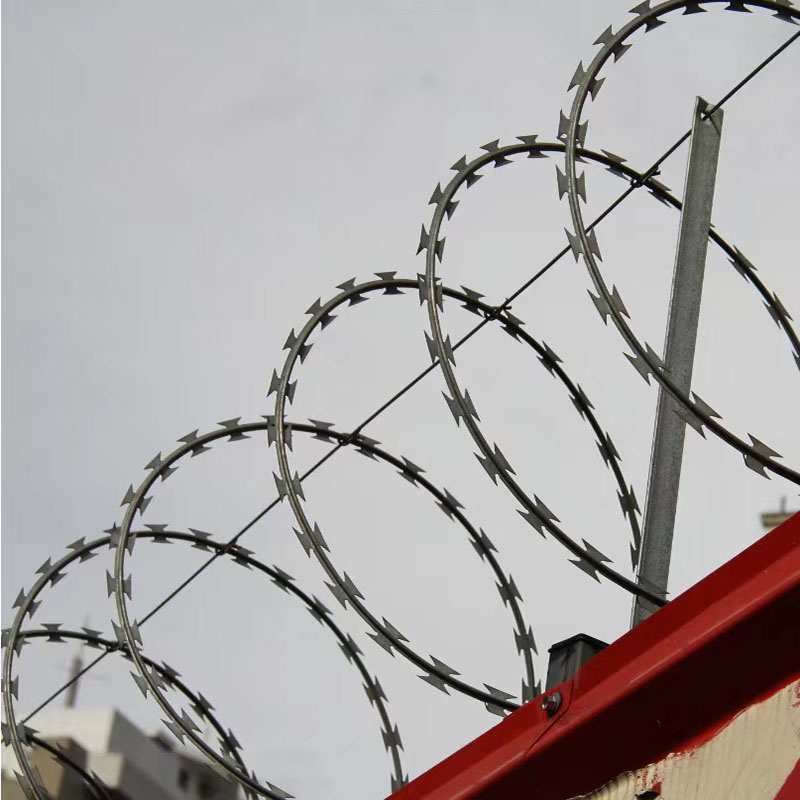-
+86 15030157877
-
sales@galvanizedmetalmesh.com
Oct . 16, 2025 11:50 Back to list
Barbed Wire Fencing - Durable, High-Tensile, Anti-Rust
Barbed Wire/Razor Barbed Wire: What Buyers Are Asking in 2025
If you work in perimeter security, you already know the humble barbed wire isn’t so humble anymore. Demand is shifting from basic farm fences to higher-spec industrial barriers, especially “concertina” coils with clipped overlaps. To be honest, the biggest change I’m seeing from site managers is a preference for heavier zinc coatings and Zn-Al alloy to outlast coastal weather.

Quick context and where it’s made
Made in South Industrial Zone 07, Anping County, Hebei, China (the wire capital, as insiders like to joke), this factory’s barbed wire and razor barbed wire are designed as deterrents with piercing and cutting blades at the wall top. Simple idea, serious effect.
Typical applications
- Agriculture and ranching perimeters, utility substations, oil & gas pads, rail corridors, warehouses, solar farms, and—where permitted—high-security sites like prisons and airports. - Many customers say the concertina coils cut install time versus stacking straight strands. I’d agree, especially on long fence runs.

Specification snapshot (real-world use may vary)
| Item | Material | Wire Dia | Barb/Blade | Spacing | Coating | Standard |
|---|---|---|---|---|---|---|
| Twisted barbed wire | Low-carbon Q195 / 45# | ≈ 1.7–2.8 mm | 2- or 4-point barbs | ≈ 76–127 mm | Zn 180–275 g/m²; PVC optional | ASTM A121; EN 10223 (series) |
| Concertina razor barbed wire | Galv. steel / 304 / 316 | Core ≈ 2.5 mm | BTO-22/30 blades | Clipped every 3–5 loops | Zn or Zn-Al; SS for coastal | EN 10244-2; ISO 9227 |
How it’s made (and tested)
Materials: low-carbon steel wire, hot-dip galvanized or Zn-Al alloy; stainless 304/316 for aggressive climates. Methods: double-strand reverse twist for standard barbed wire; for concertina, blades are stamped then wrapped onto a high-tensile core and clipped. Testing: coating mass per ASTM A90/A90M, tensile per ASTM A370, salt-spray per ISO 9227. Typical tensile: ≈ 380–550 MPa (mild steel), up to ≈ 900–1200 MPa for razor cores. Coating 230–275 g/m² is common on export runs.

Service life and advantages
With 240 g/m² zinc, field life is often 10–15 years; Zn-Al alloy or stainless can push 20–25 years (coastal winds are the wild card). Advantages: high deterrence per dollar, fast install, minimal maintenance, and—surprisingly—lower total cost than adding fence height or lighting in some projects.
What buyers are customizing
- Coil diameters: 450/600/730/980 mm. - Blade types: BTO-22 (popular), BTO-30 (more aggressive). - Coating: heavy galvanizing or PVC (green/black) for visual blend. - Packaging: water-resistant wraps, wooden pallets for export.

Vendor comparison (my field notes)
| Vendor | Lead Time | Coating | Certs | Warranty | Price (FOB) |
|---|---|---|---|---|---|
| Anping manufacturer (Origin listed above) | ≈ 10–18 days | Zn 230–275 g/m²; Zn-Al; PVC | ISO 9001/14001 | 12–24 months | Mid-range, stable |
| Trading house | ≈ 20–30 days | Varies by sub-supplier | Depends | 6–12 months | Mid–high |
| Low-cost workshop | ≈ 7–12 days | Zn often | Rare | Limited | Low |

Case notes and feedback
- Utility farm, Texas: 600 mm concertina, BTO-22, Zn-Al. Reported “clean edges, no rust” after 14 months; install team liked pre-clipped coils. - Coastal depot, Cebu: 316 stainless core, BTO-30; 1,000 h ISO 9227 salt-spray passed in lab; field checks at 9 months show no pitting. - Rail spur, Queensland: standard barbed wire (2.5 mm, 4-point), 275 g/m²; superintendent told me it “rode out cyclone season better than expected.”
Buyer checklist (quick)
- Confirm coating mass (ask for A90/A90M test sheet). - Match blade type to risk level (BTO-22 is the crowd favorite). - For coastal zones, pick Zn-Al or stainless; PVC for visual discreetness. - Request ISO certificates and recent salt-spray data.
Standards and references
-
Durable Fence Barbed Wire Solutions for Global Security & Agriculture
NewsNov.24,2025
-
Comprehensive Guide to Barbed Fence Wire – Durability, Uses & Innovations
NewsNov.23,2025
-
Barb Wire Price Per Roll – Understanding Costs, Trends & Global Applications
NewsNov.22,2025
-
Stainless Steel Barbed Wire: Durable Security for Global Industries & Relief Efforts
NewsNov.22,2025
-
Comprehensive Guide to Razor Wire Prices: Factors, Trends & Vendors
NewsNov.21,2025
-
Concertina Razor Wire: The Ultimate Guide to Secure, Practical Barrier Solutions
NewsNov.20,2025



